African violets are a treat when they’re happily in bloom. But when they’re unhappy, they can be downright strange looking.
They can grow long stems and long petioles that make the plant look like an entirely different species.
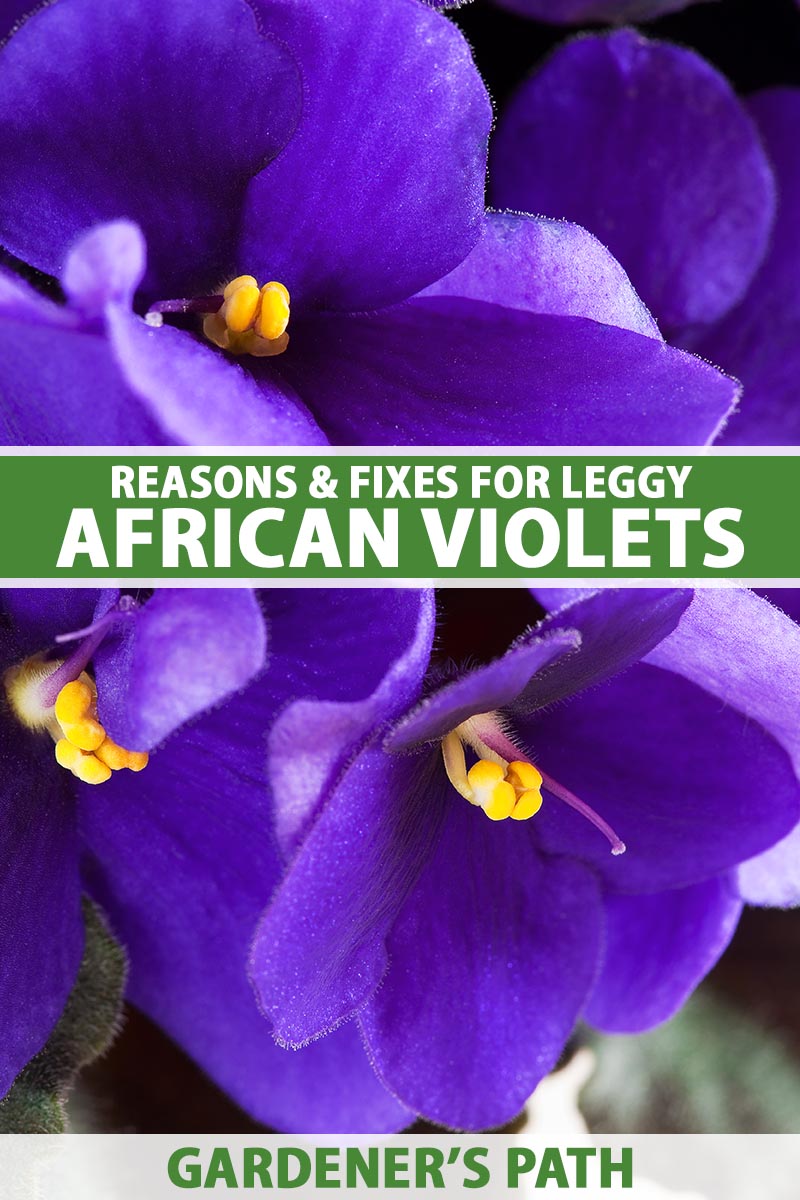
We link to vendors to help you find relevant products. If you buy from one of our links, we may earn a commission.
There are ways to address the leggy growth that’s plaguing your plants.
But first, you have to determine the specific type of growth you’re facing and what’s causing it. Then, you can jump in with a solution.
Fortunately, neither type of problem is all that difficult to fix. Up ahead, we’ll go over the different types of leggy growth and how to remedy them.
Here’s what’s on the roster:
What You’ll Learn
Before we dive in, let’s clarify a few things:
African violets can have long “necks,” or the leaves themselves can grow with long, extended petioles.
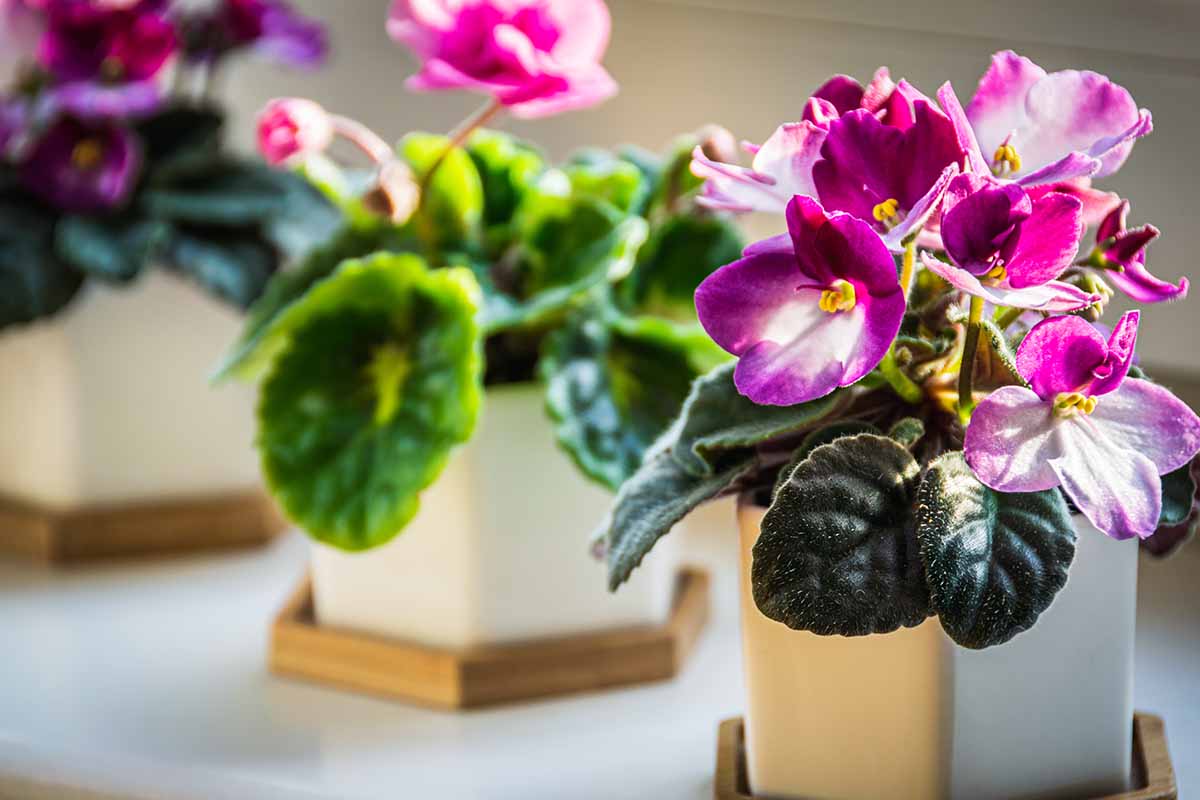
The petiole is the part between the main stem and a leaf. A neck is a trunk-like growth that forms at the center of the plant over time, as it ages and the lower foliage falls off.
These are two different types of unwanted growth, and they have unique causes. This guide will look at both.
What Causes Long Necks in African Violets?
Necks develop on African violets over time as the lower leaves fall off. It makes the plant start to look like a sort of palm tree. But this isn’t always normal development.
A healthy, happy African violet will retain its lower leaves for years, but one that’s growing in low light, that receives too much water, or that’s struggling with pests or disease will drop its lower foliage more rapidly.
If your plants are five years old or older, a long neck is normal. If your plant is just a year or two old, you’ll need to take steps to address whatever is causing the problem.
How to Address Long Necks
First and foremost, you need to figure out what’s causing a long neck to develop if it isn’t happening due to age.
Make sure the plant is in a location that receives bright, indirect light. Anything too dark will lead to leggy growth.
Next, stick a finger in the soil. Does it feel moist, like a well-wrung-out sponge, or does it feel soggy? If it’s soggy, you’re overwatering.
Wet, droopy leaves (not dry ones!) are also a sign of overwatering.

If both of those items check out, look closely at the plant for any signs of pests or disease.
Check for anything that’s moving, as well as webbing, brown spots, fungal spores, yellowing leaves, or speckled foliage.
If you see symptoms to indicate an infestation or infection, you’ll need to take steps to fix it to improve the overall health of your plant.
Once the cause is addressed, or if the cause is age, you simply need to repot your plant a bit deeper. It’s perfectly fine to bury that long neck in some soil.
To repot, pull the plant out of its existing container and brush away the soil. As a general rule, you want to use a pot that’s one-third the width of the plant’s leaves.
In other words, if the foliage spreads a foot across, the pot should measure four inches in diameter.
You don’t need to upgrade the pot size unless the leaves grow and spread enough that repotting is necessary to retain the 1:3 ratio.
Plant the violet so the lowest leaves are just above the soil line. Refill the pot with fresh, water-retentive potting soil.

FoxFarm Ocean Forest Potting Mix
I prefer to use FoxFarm Ocean Forest potting mix – my plants love it! You can pick up a 12-quart bag and have it conveniently delivered to your door from Amazon.
Reduce watering for the first month after repotting to reduce the chance of overwatering.
What Causes Leggy Growth in African Violets?
If we aren’t talking about long necks when it comes to legginess, what do we mean?
The petioles are longer than usual and the leaves grow upwards rather than out, as if they’re reaching for the sun. This is technically known as etiolation.
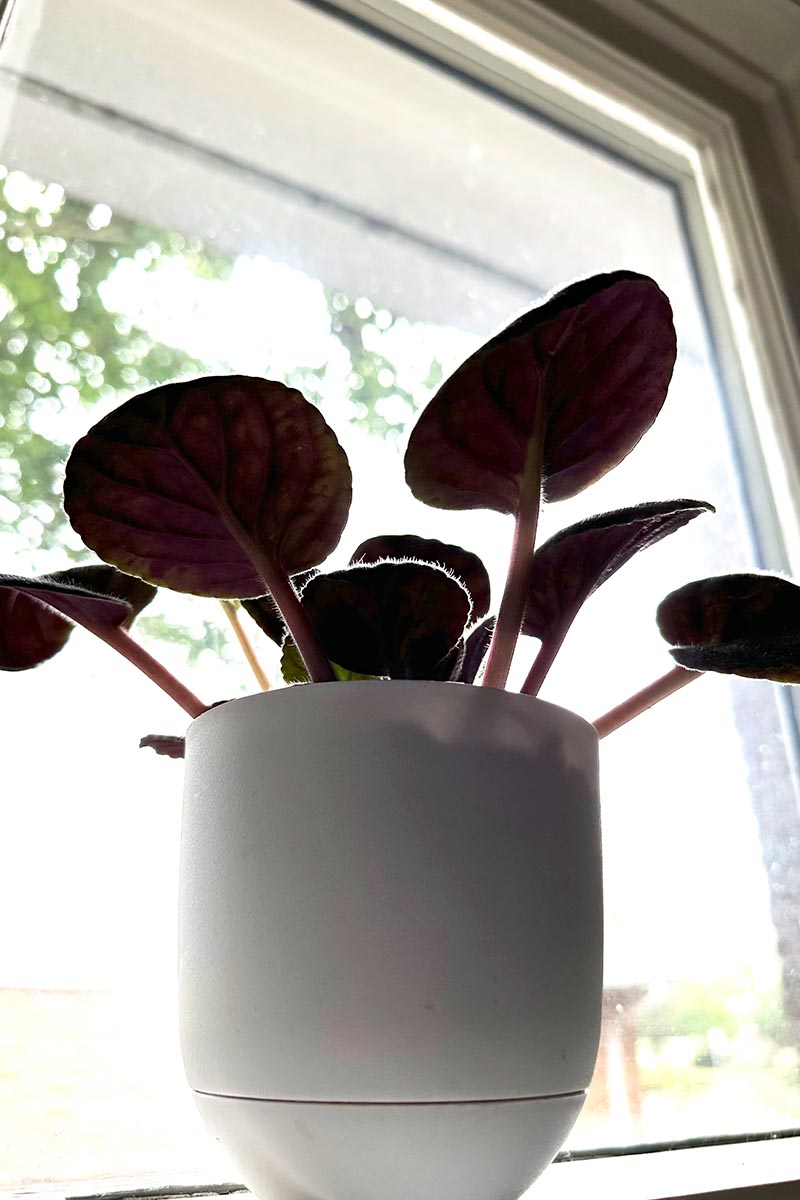
Legginess of this type is caused by inadequate sun exposure. In order to reach the light, the plant stretches out, growing longer petioles.
This longer growth comes at the plant’s expense, causing it to become weaker temporarily.
Once it reaches good light once more, the plant will send out new, tidier growth and will often drop the old, leggier leaves.
How to Deal with Leggy Growth
If your plant has developed long petioles and the leaves are growing upwards, it needs more light.
Remember, these plants don’t like direct sun, but they crave lots of indirect light. An east- or west-facing window with a sheer curtain placed over it is lovely, but a north-facing window is perfect.
If you don’t have a better spot to move your plant to, look into supplemental lighting.
You don’t have to invest in an elaborate rig, and there are lots of attractive options available that will blend in with your home decor.
You might like this adjustable three-arm lamp from Gardener’s Supply Company. You’d never know it was also a grow light if you just saw this in someone’s living room!
Once you place the plant in better lighting, the outer leaves will start to lower back down, though the petioles won’t get any shorter.
At the center of the plant, new, more compact leaves will emerge.
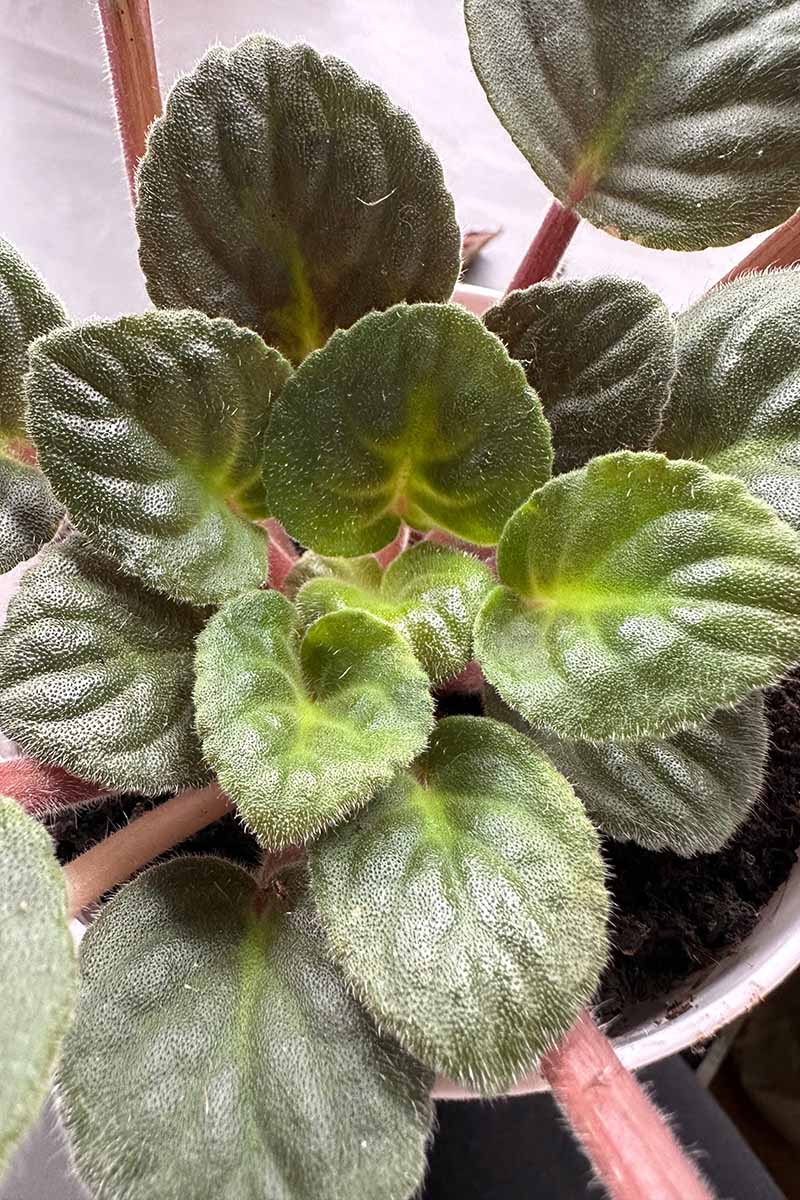
Since the leggy foliage won’t go back to normal. you’ll either need to live with it or cut it off with sterilized scissors after new growth comes in to replace it.
Because it’s usually the older, outer growth that becomes leggy, if you cut it off you might end up creating a long, bare neck in the process.
In that case, head back to the section above to decide how to fix it.
Make Your African Violets Look as Fantastic as They Should
African violets can be tricky. They need a lot of indirect light without any direct sun.
They want moist soil, but they can’t stand a substrate that’s too wet. And they can start to show their age as the years go by.
Honestly, I can really relate to all of that!
But unlike human aging, it’s pretty easy to reverse the clock for African violets. Just put them in the right light and bury them a bit deeper, and voila! Or do I mean viola?
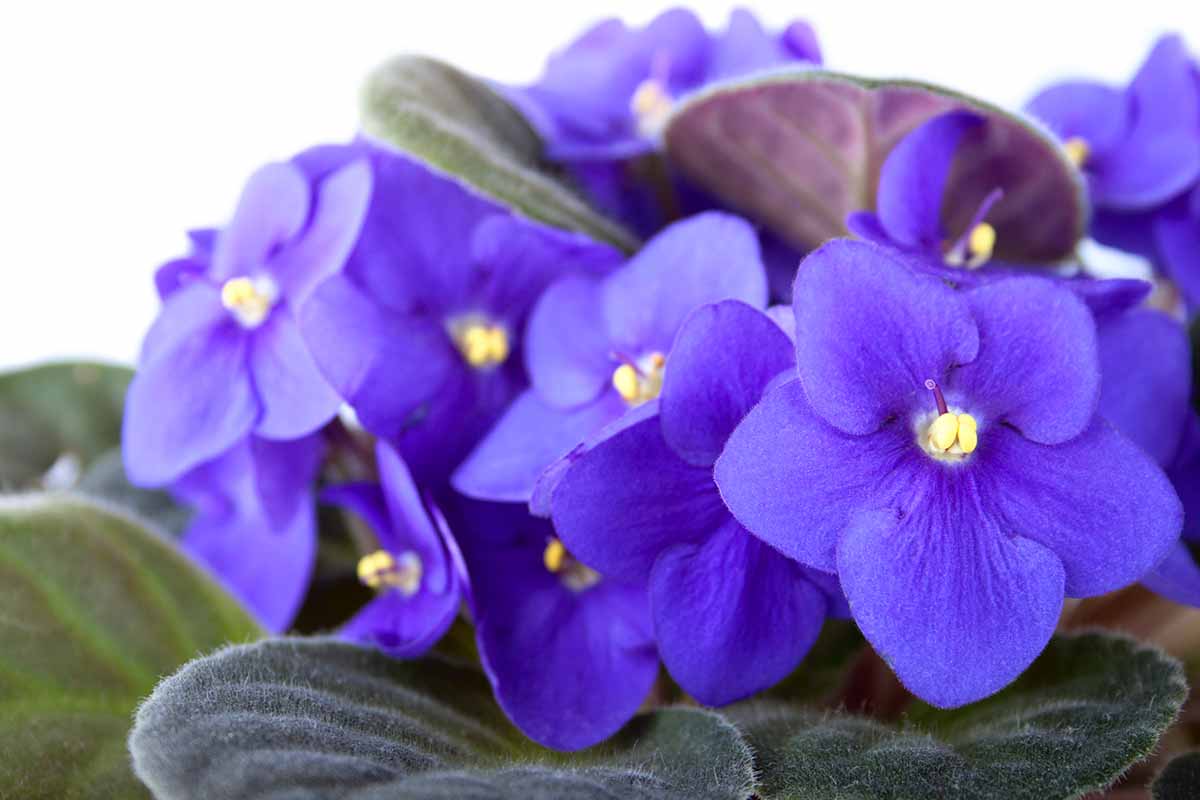
Anyway, are you dealing with leggy plants or African violets that have long necks? Is this your first time running into this problem? How long was it before you started to see healthy new growth?
Share your experiences in the comment section below so we can all learn more about caring for these classic houseplants.
And if you’re looking for more information on growing gorgeous Saintpaulia, give these guides a read next:
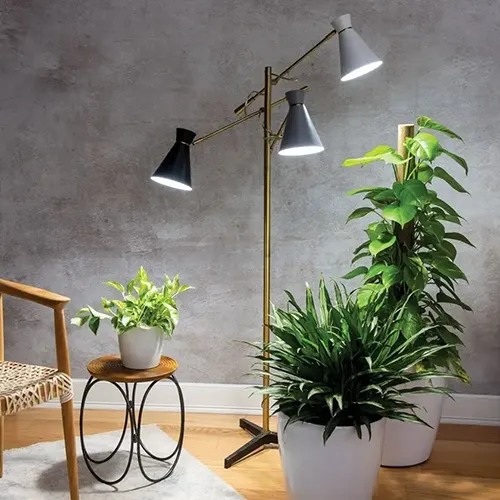



I have two African violets that I “inherited”. I’ve been nursing them, to the best of my ability and knowledge, for almost two years. They are beautiful plants but, I’m not sure that they’re beautiful African violets. They are indoors in an office setting with “normal” indoor temps and humidity. I water them every week to keep the soil moist but not wet. They live under a fluorescent lamp light that’s on for 8 hours a day. I also expose them to natural morning sunlight through a window during the summer months. As I said, they appear beautiful and healthy.… Read more »
Hi James, from what I can see, this plant is extremely leggy. That’s a pretty good indication that it isn’t getting enough light. Can you swap out the fluorescent bulb with a true grow bulb? You also want the grow light to be within a foot of the plant. Otherwise, it sounds like you’re doing everything right.
if the leaves start to curl on an African violet, does that mean its too much sunlight? The soil is damp but not wet… thank you.
Hi Linda, it could be too much sun or it could be overwatering, cold temps, or pests like aphids or mites. You could use a light meter to determine the light exposure, and a dual-purpose soil moisture meter might help, as well. If you can rule out those two things, check, to see if it’s near a drafty window or examine it closely for pests.